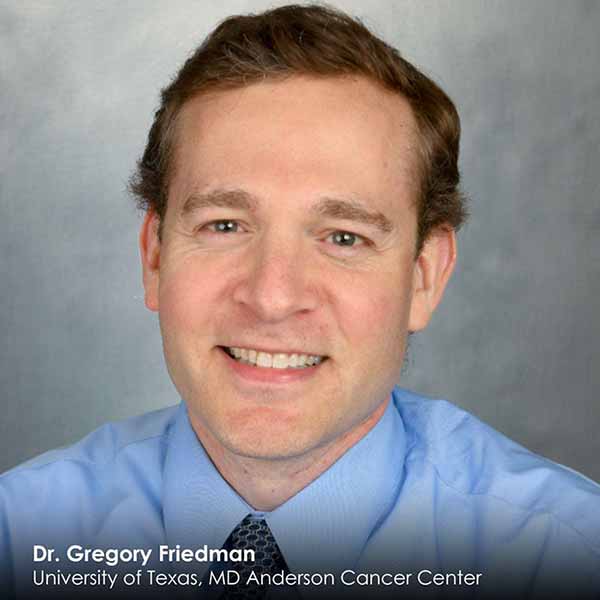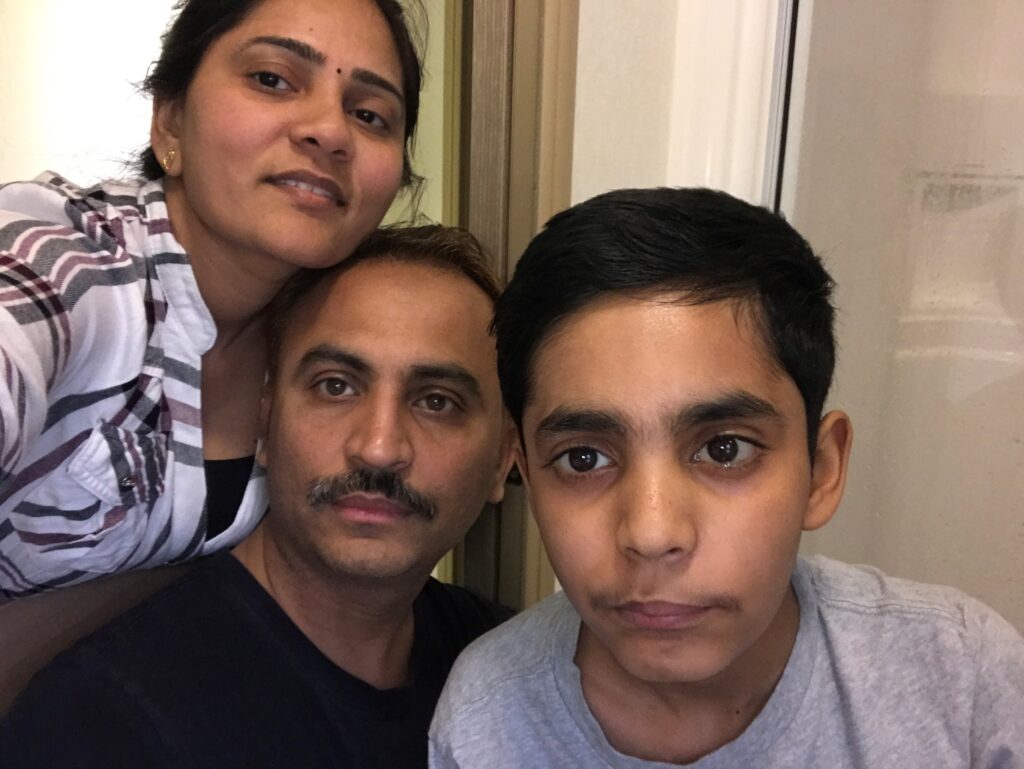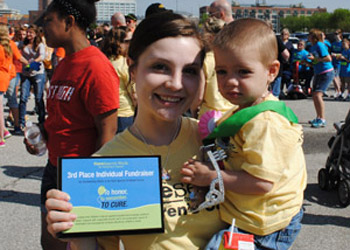We’re partnering internationally to create far-reaching impact for kids with cancer
We’re excited to share news of our recent partnership with LifeArc, a highly-regarded UK-based medical research charity. LifeArc will co-fund Dr. Gregory Friedman’s CureSearch Acceleration Initiative (AI) project aimed at revolutionizing the treatment of pediatric high-grade gliomas (pHGGs), a devastating form of childhood brain cancer. The median survival rate for children with pHGGs is less than 30%. Some types, like DIPG, remain incurable. Current treatment options often result in significant toxicity and limited efficacy, highlighting the urgent need for innovative therapeutic approaches. Children with brain tumors need safer, more effective treatments, and they need them now.

Dr. Friedman’s team is driving forward the development of novel therapies for pediatric high-grade gliomas
The goal of Dr. Friedman’s project is to develop a treatment for brain tumors that helps a child’s own immune system directly attack tumor cells while avoiding damage to normal cells in the body to improve outcomes. To achieve this goal, Dr. Friedman and his team are combining a cold-sore virus that has been modified to target and kill brain tumor cells, while not injuring normal brain cells, with a unique tumor vaccine designed to increase the immune attack on the tumor. The novel cancer vaccine, called SNAPvax, will prime the body’s immune system and sustain the effects of the engineered virus. This, in turn, will potentially offer a more effective and less toxic treatment option for children with pHGGs.
Support from his AI Award has enabled Dr. Friedman to assemble what he calls a “dream team” of researchers to develop this combination immunotherapy. The team has already been successful in determining the ideal brain tumor proteins to target with the vaccine, and are developing a tumor model to specifically test those vaccines. Additionally, they have found that the combination therapy of the cold-sore virus with the novel tumor vaccine is more effective than either therapy alone and that the timing of the therapies is very important. They have shown that delivering the vaccine prior to the virus is more effective than giving the virus before the vaccine because it excites the immune system to attack the tumor instead of removing the virus, which allows the virus to kill more tumor cells. Dr. Friedman is continuing to study how this combination therapy works together and developing methods to test how well the therapy is working. Additionally, he is working with an industry partner to develop a clinical trial to test the safety and effectiveness of the combination therapy in children with brain tumors who are in desperate need of new and improved therapies.
“We’re thrilled to expand our co-funding model internationally and are grateful for LifeArc’s support of Dr. Friedman’s groundbreaking work. Because promising research projects in children’s cancer often go unfunded, our goal is to fill that gap by ensuring the quick advancement of these promising projects into the clinic where they can help children today. LifeArc’s partnership demonstrates confidence in our unique funding model; our preclinical Acceleration Initiative projects have an extraordinary track record of moving into clinical trials, and we believe Dr. Friedman’s work will continue to deliver these impactful results.”
– Kay Koehler, President and CEO of CureSearch
Our AI projects are advancing pediatric cancer drug development
CureSearch Acceleration Initiative projects are highly innovative, address a significant challenge in pediatric cancer drug development, and have an extremely strong probability of clinical application in an accelerated timeframe – ready to reach clinic, and the children counting on new treatments, within 3 years. In fact, 60% of preclinical research projects funded through our Acceleration Initiative advance to clinical trials, compared to a less than 8% average rate of translation of drugs into clinical cancer trials.
Projects are carefully vetted by CureSearch’s world-class Scientific and Industry Advisory Councils, comprised of experts at the top of their fields in science and industry. Validation of a research project by CureSearch’s councils speaks volumes in the global pediatric cancer arena. Through this bi-continental partnership, we aim to accelerate the development of innovative therapies tailored to the unique needs of pediatric patients, bringing hope to families affected by this devastating disease.
Dr. David Jenkinson, Head of Childhood Cancer at LifeArc, says: “This project really stood out to us because this novel approach holds real promise in an area of high unmet medical need – aligning with our strategy… Our mission at LifeArc is to do better for children with cancer by helping to progress research that could lead to the development of new, less toxic, treatments, ultimately saving lives.”
This research offers new hope to families today and in the future
Namrata and Bhavesh Pandya, from Harrow in London, lost their 14-year-old son Khushil to a diffuse midline glioma (DIPG) brain tumor in 2017. Following his diagnosis, the couple tried their best to keep life as normal as possible for Khushil. They vowed to make the most of the time he had left and drew up a wish list of things he wanted to do. Khushil continued to go to school, and his family insisted that his medical appointments were scheduled outside of school hours. He even completed his bronze Duke of Edinburgh expedition in June 2017 in his wheelchair. He died in his parents’ arms, at home, a few months later.

“Bhavesh and I will never be ready to accept that, in this day and age where science has progressed in so many areas, with this particular tumor, there’s very little knowledge on how and why it happens,” says Namrata. “More effective treatment means shorter duration of illness, lesser side effects, better quality of life and could potentially save more lives and families. I believe that morally we should be investing in children’s brain tumor treatments to save them and protect them.”



